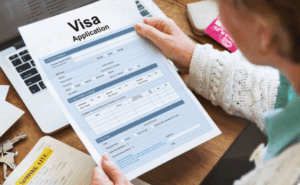Self Petition EB-1A: How to Apply Without an Employer
One of the most empowering things about the EB-1A visa is this: you don’t need an employer to petition for you. If you’re at the top of your field, whether you’re a scientist, entrepreneur, artist, professor, or athlete, you can file a self-petition EB-1A and control your immigration future.
We’ve guided musicians with no manager, startup founders between funding rounds, and researchers without job offers. They all asked the same question: Can I apply for a green card without an employer? The answer is yes, and if you’re reading this, it might be the right time to begin.
At Passage Immigration Law, we help high-achievers just like you understand how the EB-1A works, how it compares to other pathways like NIW or EB-1B, and how to file the EB-1A application successfully on your own.
Here’s everything you need to know.
What Is EB-1A?
The EB-1A is a subcategory of the first employment-based preference for green cards. It’s designed for individuals who have demonstrated extraordinary ability in the sciences, arts, education, business, or athletics.
Unlike other employment-based categories, the EB-1A green card allows for self-petitioning meaning you don’t need a job offer or employer sponsor. It’s you, your body of work, your impact, standing on its own.
That’s what makes this route ideal for:
- Independent researchers or consultants
- Freelancers or self-employed professionals
- Startup founders
- Creatives and performers
- Academics moving between institutions
Self Petitioning EB-1A vs. EB-1B and EB-2 NIW
If you’re deciding between the top three self-petition-friendly categories, here’s a basic comparison:
| Path | Self-Petition? | Employer Required? | Labor Cert Required? | Processing Speed |
| EB-1A | Yes | No | No | Fastest |
| EB-1B | No | Yes | No | Fast (but employer needed) |
| EB-2 NIW | Yes | No | No | Moderate |
The main difference between EB-1A and EB-1B is who applies: EB-1A is self-filed, while EB-1B must be employer-sponsored. The difference between EB-1A and EB-2 NIW lies in the level of proof: EB-1A is tougher but faster, while NIW (National Interest Waiver) allows broader cases, but with longer review times.
So if you want the most control and you meet the bar, the self-petition EB-1A is one of the most powerful immigration tools out there.
EB-1A Eligibility Criteria
You don’t need to win a Nobel Prize, but you do need to prove that you’re at the top of your field.
To qualify for the EB-1A green card, you must show:
- Extraordinary ability in your area of expertise
- National or international acclaim
- Sustained achievement in your field
- Intent to continue working in that field in the U.S.
USCIS gives you two ways to prove this:
- Option 1: Win a major international award (very rare)
- Option 2: Meet at least 3 out of 10 criteria defined by USCIS
The 10 EB-1A Visa Requirements (And Examples)

You’ll need documentation for at least three of these:
1. Lesser National or International Awards
– e.g., a national grant, innovation prize, regional award
2. Membership in Associations That Require Excellence
– e.g., selective industry groups or academic societies
3. Media Coverage or Published Material About You
– profiles, interviews, major blog coverage, etc.
4. Judging the Work of Others
– conference review panels, competition juries, peer reviews
5. Original Contributions of Major Significance
– patents, breakthrough research, industry-changing designs
6. Scholarly Articles
– published work in top-tier journals or industry publications
7. Artistic Exhibitions or Showcases
– featured performances, gallery shows, curated events
8. Critical Role in a Distinguished Organization
– leadership that shapes key outcomes or business direction
9. High Salary or Remuneration
– proof that your income is significantly above industry norms
10. Commercial Success in Performing Arts
– sales numbers, streaming stats, ticket sales, box office returns
Your EB-1A self-petition must not just list these — it must persuasively explain why your evidence proves you are “extraordinary.”
EB-1A Sample Petition Structure
Here’s what we include in a successful EB-1A application:
- Form I-140: The main immigrant petition
- Filing fee (currently $700)
- Personal Statement: A detailed cover letter explaining your eligibility
- Evidence Portfolio: Articles, letters, publications, awards
- Recommendation Letters: From experts in your field
- Detailed CV
- Optional: Form I-485 for adjustment of status (if filing from inside the U.S.)
Every one of our clients receives a custom-built petition that not only meets requirements but tells their story in a compelling, cohesive way.
How Long Does It Take?
The EB1A green card processing time depends on how you file:
- Premium processing (for I-140): 15 calendar days
- Adjustment of status (I-485): 8–15 months on average
- Consular processing (if abroad): 10–16 months
Many of our clients choose concurrent filing, submitting the I-140 and I-485 together to get the ball rolling on work and travel permits.
Real Case Experience: Independent Designer from Italy

We worked with Francesca, a graphic designer from Italy who had no U.S. employer, but an impressive international portfolio. She had work featured in major branding projects, received global design awards, and judged for a European digital arts contest.
She wasn’t famous. But she was excellent, and we proved it.
We built her case around five criteria. Her self-petition EB1A was approved in 10 business days with premium processing. She received her green card within the year.
Common Mistakes to Avoid
- Applying too early: If you haven’t reached sustained success yet, wait until your track record is stronger
- Using weak letters: USCIS values quality over quantity. Detailed, independent letters from recognized experts are key
- Assuming your PhD or job title is enough: They help, but EB-1A is about impact, not just credentials
- Poor organization: USCIS officers review hundreds of cases; make yours easy to follow, complete, and persuasive
EB-1A vs. EB-2 NIW: Which One Should You Choose?
If you’re unsure between EB1A vs NIW, ask yourself:
- Can you prove top-tier excellence with documented impact?
- → EB-1A may be best
- Are you working in an area of national interest (health, education, environment)?
- → EB-2 NIW might be stronger
We help our clients decide based on timeline, risk level, documentation strength, and long-term goals.
Final Thoughts: The Power of Self-Petitioning

There’s something truly liberating about the self-petition EB-1A process. You don’t have to wait for a job offer, sponsorship, or company approval. You don’t need to fit into a system; you build your case based on your achievements.
At Passage Immigration Law, we’ve helped musicians, scientists, digital artists, fintech founders, and many more take this path. We don’t just submit petitions. We tell your story in a way that USCIS can’t ignore.
Ready to apply for your EB-1A visa without an employer? We’ll guide you every step of the way from eligibility review to approval. Book your consultation today and let’s show what makes you extraordinary.
Disclaimer: This article offers general legal information, not legal advice. Do not rely upon this information without seeking legal counsel. If you need legal advice, you may contact us directly to speak with an attorney. We disclaim all liability concerning actions taken based on any information presented. Every case is different, and outcomes will vary depending on the unique facts and legal issues of your case.







